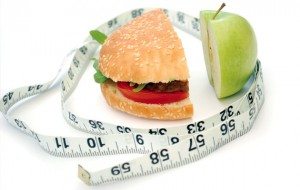Fasting means abstaining from food. Stopping yourself from eating food that make up those bellies and that unwanted fat on your thighs and arms.
Feasting is eating all the food that you would like to eat without having to watch out for too many calories and what not.
In an intermittent fasting diet plan, there are only 2 things that you need to do- fast and feast. The fasting takes longer than the feasting, of course.
Here’s how you do this diet plan:
Fast: as mentioned, you’ve to stop eating. This method is easy. I don’t eat for a few hours after lunch. I eat only when it’s dinner time. This isn’t what I mean though. Fast for not less than 16 hours. While you fast for this long, your body will have to have a source of energy. With the lack of food, your system will then burn the excess body fat that are considered reserves. You can burn this fat faster by exercising.
On a fasted state, it’s better to take in more water so you won’t feel the hunger and you won’t feel cranky all the time. Tea and coffee with not much sugar can also help in reducing the urge to eat.
Recommended Reading: Intermittent Fasting on the Keto Diet Plan – Is it Good?
Adrenaline and noradrenaline (norepinephrine) are released more than the usual when you fast. This means you’ll have a sharper mind. You may want to take advantage of this and exercise.
Fasting has many benefits that extend past lowering the incidence of disease.
What else can fasting do? For one, you won’t have to worry so much about the budget for the food for breakfast or dinner or lunch. In the intermittent fasting diet plan, you get to skip 1 to 2 meals a day, and you’ll save your meal allowances!For someone who always has to make decisions everyday, you’ll have more time to decide what to do next instead of worrying about what’s for lunch or dinner.
Note: If you’re pregnant or if you’re diabetic, it isn’t advisable that you fast for 16 hours. This is to avoid any unwanted side effects.
 Feast: on the 1st hour of your feast (on your first day in the intermittent fasting diet plan), you can eat whatever you want to eat. You can disregard your list of what to eat and what not to eat since there are no food restrictions when doing the diet plan. Even with this though, there’s a list of what to do for better results on your feast hours:
Feast: on the 1st hour of your feast (on your first day in the intermittent fasting diet plan), you can eat whatever you want to eat. You can disregard your list of what to eat and what not to eat since there are no food restrictions when doing the diet plan. Even with this though, there’s a list of what to do for better results on your feast hours:
- You might want to eat quality food- fresh and unprocessed food isn’t just healthy, but it also helps in achieving the perfect body in less time.
- Don’t rush. Don’t chew 3 times and then swallow. Help your digestive system in digesting all the nutrients you can get from your food by chewing slowly.
- Be aware of the amount of food that you take in. While there’s no restriction on the food that you eat and the amount of it, you should know that there’s progress when the calories are being controlled.
- The main reason for the feast is to give your body reserves. During your fast, you’ll need energy to go through the day. Your body will then burn all your body fat – this is your goal – and use it as your source of energy. If you’ve eaten too much, exercise. Help your body burn the fat so your next intake of food will all be reserves. It’s recommended that you exercise before your feast or before your fast ends.
- Always learn when to eat and when not to eat. You have to teach your body the time that it has to eat and the time that it has to bear with the hunger. If you cannot keep a consistent timeframe of eating and not eating, the intermittent fasting diet plan won’t work its miracle as it did the others.
The intermittent fasting diet plan can help you reduce the fat that you hide under huge clothes. Don’t overdo it, and don’t take the plan for granted. Do it the right way, and you’ll get the results.
 A Guide To The Intermittent Fasting Diet Plan
A Guide To The Intermittent Fasting Diet Plan
The intermittent fasting diet plan has become so popular since many people have experienced the amazing benefits they get from it. They have lost pounds simply for following a scheduled time of eating or not eating anything. However, without the right steps and guidance on how to properly execute the plan, you just might go wrong.
Your cheat in achieving the intermittent fasting diet plan:
If you’ve just learned about the intermittent fasting diet plan, please don’t do it right away. It’s like jumping into a pool when you don’t even know how to swim. Just because you saw people going right in, it doesn’t mean you can do the same thing, too. You’ll have to know what your body’s beat is and what it’s up for.
Here’s how you should start the plan:
Have you ever been hungry?
I’m pretty sure you have. That means you know what it would feel like to be hungry for hours!If you’ve only been hungry for not more than 6 hours, then you better start stretching those hours to about 8 or 10 so your body can get used to it. Don’t be scared. Eight hours of sleep means eight hours of hunger, so you can pull this intermittent fasting diet plan off easily.
When do you stop eating?
You stop eating once you’ve finished your dinner. That is the start of your fasting. That very 1st hour is the 1st hour of your fasting. If you sleep for 6 hours, then you should not eat right away. You can wait for 2 or 4 more hours before having your breakfast. That is if you’re a starter. If you’ve taken all the diet plans and have experienced being hungry for more than 8 hours, then you can start your fasting for 14 or 16 hours…if you’ve had enough sleep to give you energy for the hours that are left for your fasting.
You may feel the hunger at the very second you wake up, but a glass of water should do the trick. Don’t think of your breakfast or your daily routine.Killing more hours without taking in food will be challenging. It’s recommended that you exercise to burn fat faster. You’ll be shedding that body fat in no time and you’ll be in perfect shape!
When should you start eating?
You start eating once you’ve completed your 14 or 16hours of fasting of course. If you aimed for the 16-hour fasting and your dinner was at 8pm, you can start eating at lunch. Remember, since there are no food restrictions, you can eat what you usually do, but always think of moderation.
 What should you eat?
What should you eat?
The good thing about the intermittent fasting diet plan is that you won’t have to choose the food that you eat. The fasting itself can work the miracle. But, a healthy diet can still help your fasting do its job faster. Remember that the food you take in should be able to supply you enough of, but not more than, what your body needs until your next fasting.
If hunger causes headaches or dizziness or fatigue, you’ve to have water always ready for your rescue. It can suppress the hunger so you won’t have to worry about breaking your fast.
How long should you be in the intermittent diet fasting plan?
Honestly, there’s no timeframe to fully lose weight and get the perfect body.You can do this diet plan for a month, a year, or a decade, and you’d still lose weight.If you do take the plan as a regular thing, it’ll maintain the body that you’ve accomplished when you started it.
Doing the plan will adjust your body’s rhythm, and this is expected. If you eat only 2 meals in a day, your body will get used to this and you’ll be doing this as if it’s a natural thing, no longer a plan. You’ll no longer need to be aware of the food you eat, only the time that you eat and the time that you don’t.
How do you know the intermittent fasting diet plan is for you?
If you’re pregnant or diabetic, it isn’t advisable to take the intermittent fasting diet plan. You’ll need to have a normal insulin level to avoid any unwanted side effects.
If your body is not responding well to the diet plan, you’ve to listen to it. Always take it slow, especially if you never tried staying hungry.
 Intermittent Fasting Diet Plan Benefits
Intermittent Fasting Diet Plan Benefits
Are you that friend who tells your other friends “I’m going to eat less so I can lose weight”?What if you don’t eat for a certain period of time? Wouldn’t that work faster? The Intermittent Fasting diet plan isn’t an ordinary diet plan. It’s more of a scheduled eating.
How does this work?
Primarily, you don’t eat. For at least 14-20 hours, stop yourself from eating. The main plan of the Intermittent Fasting diet plan is to have your system digest your excess fat, which makes up your love handles or those muffin tops.When your system has no more to burn since you’ve not eaten for quite a few hours, your body will be needing a source of energy and will then burn your excess fat.
Don’t take this as a starving game, rather a rest from chewing and putting food into your mouth. It’s a 14 to 20hour rest. Besides, if you stop eating at 6pm and wake up at 7am, you’ve already completed 13 hours of fasting and only need to wait for an hour to complete your 14-hour rest.Next thing you know, you’re doing the Intermittent Fasting diet plan.
The process of fully digesting the fact that you won’t eat for a long period of time may be hard, but the results will all be worth it.
For first-timers who are so used to eating more than 3 times a day, this sudden shift might take you from losing weight to losing your life. Don’t rush it if you think your body’s not yet up to it. You can start with a 12-hour fast so your body won’t be in total shock of the sudden change. Once you get used to it, you can work your way up to 14 or maybe 16 to 20 hours of fasting.
Your benefits?
As mentioned, the excess fat from your body will be burnt, leaving you muscles and a well-shaped body. If this fat is burnt, you can then take your 4-8 feasting hours to eat all the calories you need to get you through a day. No need for your list of what to eat and what not to eat.I don’t mean you can eat all that unhealthy food though. You’ll have to stay healthy during this Intermittent Fasting diet plan.Remember, after your fasting, you’ll probably have burnt a lot of that body fat and you’ll need to eat a lot to replenish your body’s source of energy.
After this diet plan, you can throw your list of foods-to-eat away and then you can worry no more if you’re staying healthy because you already are.
You won’t have to worry so much about what to eat for breakfast or lunch because you probably won’t be eating during those times. You’ll be busy making other decisions, and your body will be doing its job burning your fat so you can still be at it even if you’ve not eaten anything at all. You’ll have more time for yourself or your job because you’ll be eliminating the time it would take to think about food.
One more benefit is losing weight without needing to exercise or following what the books say. You’d be simply adjusting your time of eating and you would be getting there without all the exhaustion and reading the calorie content of those items in the grocery store.
 What to do with hunger?
What to do with hunger?
During your fasting state, you may feel your hunger getting in the way. It may cause you to feel dizziness and fatigue. These are normal on your first days, but don’t worry; your body will adjust to your eating habit, and the next thing you know, not eating for 14-20 hours is normal.
When you feel these symptoms though, you might want to drink water or tea (with less sugar) to suppress the hunger.Water has zero calories, so it won’t alter your plan. Tea, on the other hand, should be taken with less sugar.
A disappointing effect of the Intermittent Fasting diet plan is you might not be able to concentrate well, especially when you’re still on your first days. Just keep hydrating your body and you’ll end up well.During your feasting hours, remember to take in enough food that will build you reserves for your fasting hours.
Losing weight fast
There’s no harm in trying the Intermittent Fasting diet plan. You can do a little exercise while on the plan and you can lose weight faster. Remember, take in as much water as you can, as this can also improve your state and make you lose weight a lot faster. A healthy lifestyle and losing weight go hand in hand. Just don’t overdo it.
Also read: The Female Fitness Model Diet Plan




 A Guide To The Intermittent Fasting Diet Plan
A Guide To The Intermittent Fasting Diet Plan
 Intermittent Fasting Diet Plan Benefits
Intermittent Fasting Diet Plan Benefits What to do with hunger?
What to do with hunger?




Great article. But my friend is suffering from mild epilepsy, on pills. He is interested in the fasting. What is your suggestion?